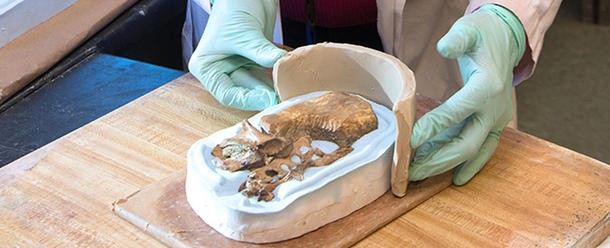At only eight years old, Jack Horner, the paleontologist who inspired the marvelous movie, Jurassic Park, found his first dinosaur bone. Now, he compares the way digging up dinosaur fossils in the present time from how everything worked back in the day. Explaining how modern technology help and speeds up the process of hunting for dinosaur bones, and how this can be a great thing for future research.

More and more fossils are coming up every week
This field, paleontology, gained an unexpected and remarkable boom after the movie made its debut and helped open up a handful of borderlands from Argentina to Australia and withing three years, a farmer in China had uncovered the word's first peek of a feathered dinosaur on a hillside. The success of the movie also helped introduce a new generation of paleontologists.
In the present time, there seems to be a lot of dinosaurs remains popping here and there and one of the biggest find yet that hit the headlines is a new species and genus of a Tyrannosaur which was found from Alberta, Canada. In Asia and South America, a handful of ecosystems have been brought to light. From massive spiked herbivores to weird-looking bat-winged birds. In Australia, however, a literal gold mine of dinosaur fossils have been uncovered which species have been preserved as gems.
Modern Tools and Technology has helped speed up dinosaur fossil digging
While making the film, Jurassic Park, Horner was a consultant to Director Steven Spielberg, and he can still remember the swarm of students that signed up to enter his classes after the movie debuted. Paleontologists and author Steve Brusatte who helped identify 15 to 20 dinosaurs have said that it was not a walk in the park. Still to this day, students have kept coming and signing up which has been resulting in an outburst of fossil discoveries with no signs whatsoever of slowing down, Brusatte saying that "We're not running out of dinosaurs."
Paleontologist Alfio Alessandro Chiarenza has been tracking the rate of brand new finds and discoveries since the 1800s' first bone that was unearthed which includes the sudden frenzy today. Chiarenza has also stated that with better technology and the advancements of it today, it helps big time in speeding up dinosaur findings.
Horner says that the tools and gadgets being used today compared to the ones before have helped out bones that are nearly impossible to pick out with labs now having X-Rays, 3D Printing, molecular particle accelerators, and even drones are being sent out to take photos.
It is amazing to see how modern technology has revolutionized and helped the way paleontologists, scientists and various researchers go about their work and move forward without much hassle. These advancements have truly paved the way to the increase of research and findings, to help in the betterment when it comes to understanding the world around us and how it came to be.
ⓒ 2026 TECHTIMES.com All rights reserved. Do not reproduce without permission.




